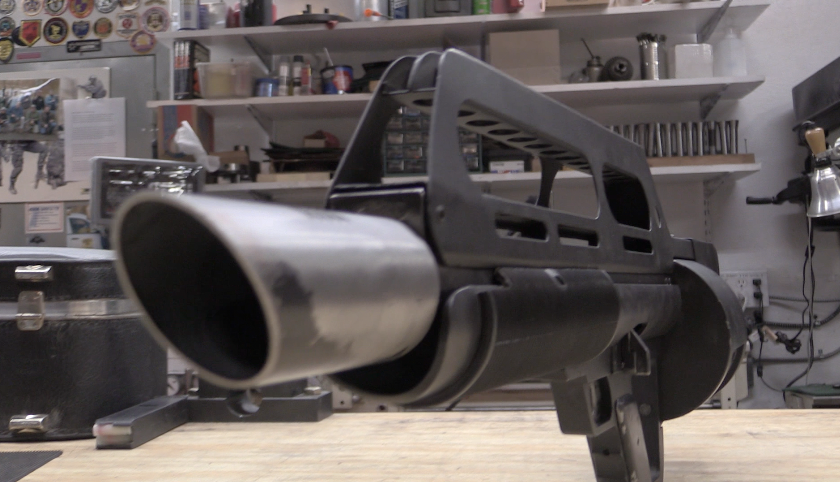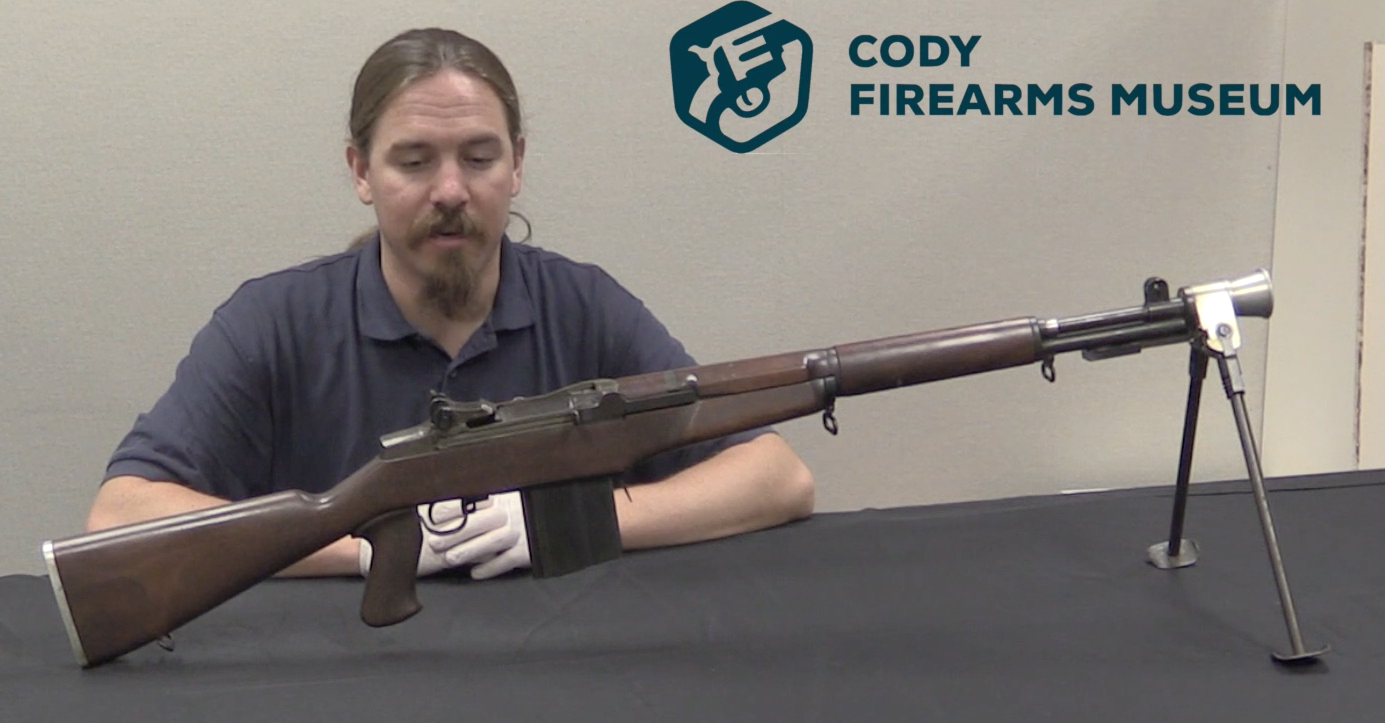In 1962, Remington tried to exploit the popularity of pop-culture cowboys by introducing a lever-action version of its of its Nylon 66 semiauto .22 rifle. This new model was the Nylon 76, named the “Trial Rider”. It used the same faux-wood styled polymer frame as the Nylon 66, and was actually a pretty good rifle. It has a fast bolt throw and is very handy…but a proper cowboys-and-Indians rifle it is not. Little Johnny, it turned out, didn’t really want to play Lucas McCain with a plastic Remington – lever or not. He wanted a proper wooden Winchester! And thus the Nylon 76 ceased production in 1965 with 26,927 made. That’s actually quite a lot, but not nearly as successful as the Nylon 66 parent design.
Thanks to Dutch Hillenburg for loaning me this example to film!




Love the videos on .22s. I believe the Remington 550 would be a great rife to cover.
There was also a bolt action model
Thanks. I was entertained. I saw ads for these when I was a kid in the Sixties but I didn’t have money, and then mail-order guns ended with GCA68. By the time I did have money and a place to keep them, the Nylon 76 was a rare and expensive collector’s gun. It’s nice to see one in action even if only on a video screen.
Those responsible have been sacked lol. But, have those responsible for the sacking been sacked? And again, wrong movie reference.
nothing related to Remington, or nylon, nor the numbers 66 and 76, which look like excellent plinkers, and since you already have your duster out, you might give a look at a wildly impractical “cowboy” gun,namely the Chiappa 9″ Mare’s Leg, I believe they chamber it in .45 Colt, could be a fun li’l shooter (and the barrel is short enough that you CAN spin it
Spin-cocking is not recommended unless you’re good at doing the thing with only one finger. Otherwise, you’ll break your entire hand. I could be wrong.
I laughed pretty good when you were pouring the rounds into the stock. Thank you Ian for the great stuff as usual.
A blowback .22 (where the “receiver” does nothing but align the barrel, bolt, and FCG) seems like an ideal fit for all-plastic construction, but most leverguns have stressed receivers. I’d really have liked to see a closer look at how these work.
Lever actions are lever actions, whether the receiver is stressed or unstressed. And a blowback .22 has to send recoil forces somewhere.
Showing how a gun works is generally my favorite part of a video. Ian almost always does this, even when it’s fairly obvious, but it’s all the more interesting when it isn’t. In this particular instance, Remington engineers took on a daunting design challenge (a construction technique incompatible with most (all?) of the lever actions he has reviewed so far), so it would have been fascinating to see their solution.
Yeah, a spring, which is why SMGs were readily adaptable to light, inexpensive receivers despite their much more powerful cartridges.
“(…)how a gun works(…)”
Interestingly this https://www.bevfitchett.us/firearms-assembly/p-1.html stripping manual (for some reason beyond my comprehension titled Remington Nylon 76 Parts)provides some clues
short-stroke finger lever which aids speed of operation
slide safety on top of the stock just behind the receiver
4-round tubular magazine in the buttstock
Working the lever rotates a gear which moves a rack connected with the breech-bolt. When the lever is fully closed, the breechbolt is locked by a locking bar pivoted in the rear of the receiver.
Thanks, Daweo! Interesting as always. I wonder if the locking lever actually transfers recoil force to the receiver, or if it just pivots there and locks the bolt into some sort of extension.
For blowback recoil, I generally follow Chinn’s conservation of momentum. A .22 is about 1/3 – 1/4 the bullet mass of a 9mm at a similar velocity.
I did some computations and .22 LR recoil force is few times lower than even black-powder-era “dual purpose” (carbine & revolver) cartridges.
Force might be estimated by multiplying area of circle with diameter equal to biggest diameter of case disregarding rim by pressure.
Values (rounded) based at https://naboje.org/ for dimensions and http://kwk.us/pressures.html
.22 LR: 5,72 mm and 25 giving 642
.32-20: 8,77 mm and 30 giving 1812
.44-40: 11,84 mm and 16 giving 1762
It has a Sling!
Not a good idea!
The structure is floppy enough for the thing to fire if it’s being carried on a sling with a loaded cartridge in the chamber
Thanks for the great video presentation, Ian. A truly nostalgic and enjoyable blast from the past. There is only one thing missing — the beginning of the video shows you dressed in appropriate garb but with modern tactical footwear where you should be wearing Ariat, Vaquero or Tecovas cowboy boots or something similar in keeping with the Wild West theme!
If you want to review another oddball 22 lever action that’s no longer made, you might try the Ithaca 49. It was a single shot 22 and the lever operated a falling block. I wanted one like crazy for my first 22, but it only had the hammer safety, so my dad didn’t think it was safe enough.
Wow, this is such an interesting piece of history! It’s fascinating to learn about Remington’s attempt to capitalize on the popularity of pop-culture cowboys back in 1962 with the introduction of the Nylon 76, also known as the “Trial Rider.” It’s commendable that Remington utilized the faux-wood styled polymer frame, similar to their successful Nylon 66 semiauto .22 rifle. From what you’ve described, the Nylon 76 sounds like a well-made rifle with its fast bolt throw and handy features.
However, it seems that Remington misjudged the desires of young enthusiasts like Little Johnny, who preferred a more authentic experience. It’s not surprising that kids back then wanted to play out their cowboy fantasies with a proper wooden Winchester rather than a plastic Remington, even with a lever-action mechanism. It’s always intriguing how consumer preferences can shape the success or failure of a product.
The fact that only 26,927 Nylon 76 rifles were produced before ceasing production in 1965 shows that while it may not have been a commercial triumph, it still had a significant production run. Nonetheless, it’s important to note that the Nylon 66, the parent design, remained far more successful in the market.
Lastly, a big shoutout to Dutch Hillenburg for loaning you this example for filming! It’s wonderful to see enthusiasts preserving and sharing pieces of history like the Nylon 76, allowing us to delve into the lesser-known aspects of firearm development.